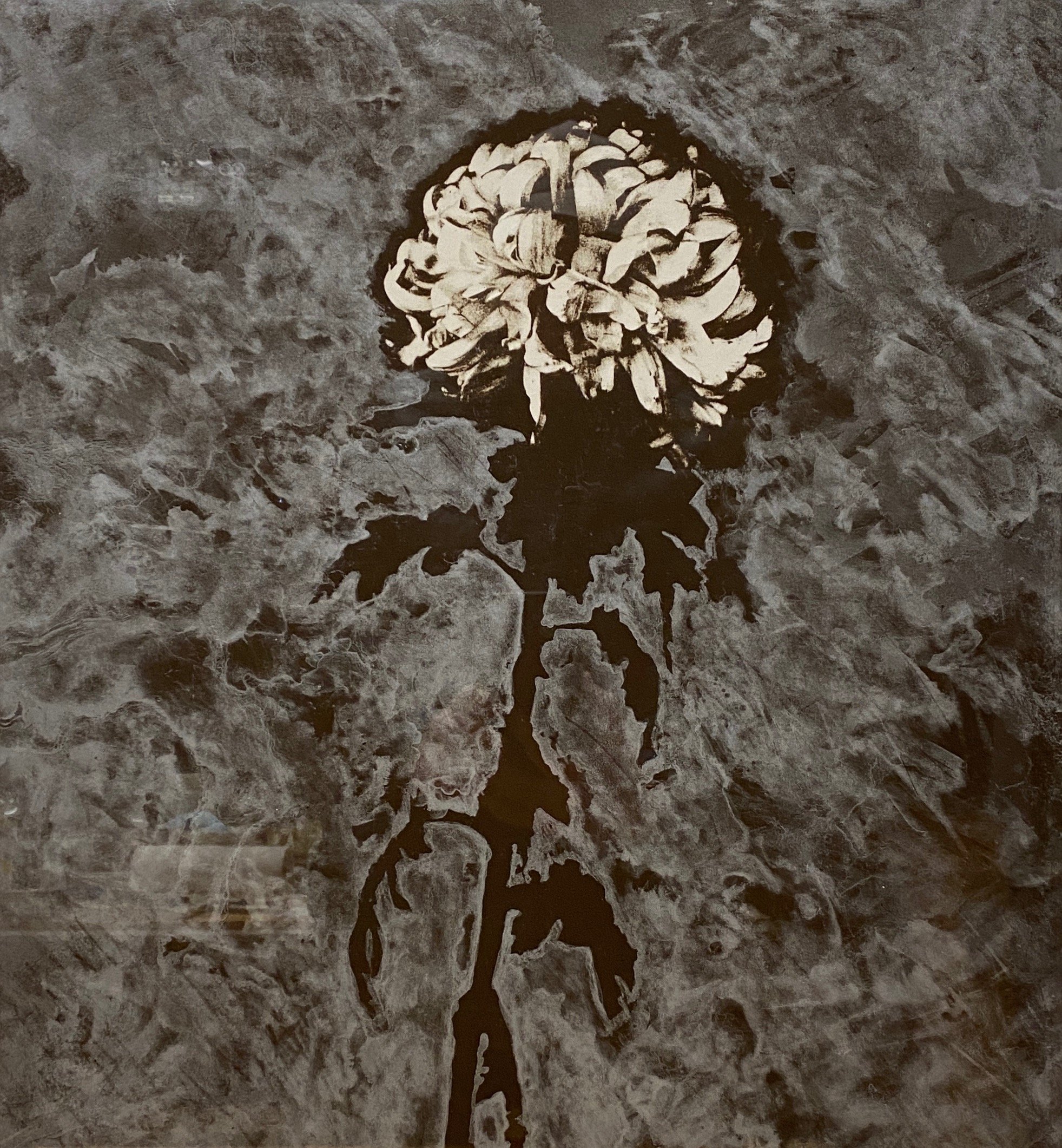Collotype
The collotype printing process was invented in the late 19th century- about 1880-1885. It is a photo process using a continuous tone negative and a light sensitized plate.
The early plates were made out of glass, but they tend to break in the press. Plexi or aluminum litho plates work very well. The litho plate works the best I feel because it has a tooth on it which helps hold the light sensitive gelatin from being scrubbed off during printing. I have also used limestone and onyx stones as plates. The negative is exposed to the sensitized plate with the appropriate light source for a specific time. Development is done with water in a dark area so as not to over-expose the image. After exposure and development a raised area of gelatin remains on the plate. During the printing process, the gelatin is kept moist by light sponging- like Lithography- or misting. The light areas of the image hold more moisture than the dark areas and so will take less ink. The dark areas are hard and will hold more ink. The oil-based ink is repelled by the light areas which hold more water.
Once the plate is fully inked it is run through the press and the gelatin must be re-dampened and inked again. The beauty of the medium lies in the very fine tones created when the gelatin is exposed to the light source. The gelatin tweaks into shapes similar to brain matter giving the fine tones without a half-tone screen which has a mechanical appearance. The process is so beautiful that some photographers print their Fine Art Prints with this medium.
For more information and technical process, please refer to the Tamarind Technical Paper above
Four color litho on stone with collotype transfer flower. “The White Chrysanthemum”, 20”x16”






